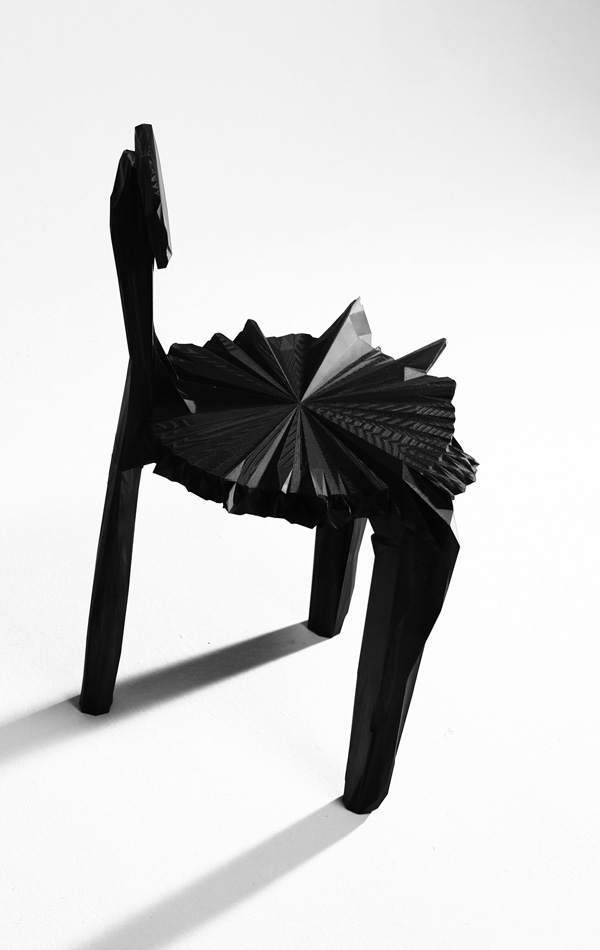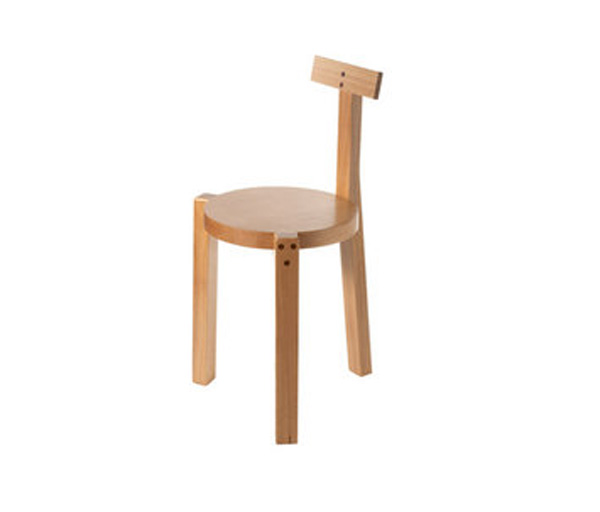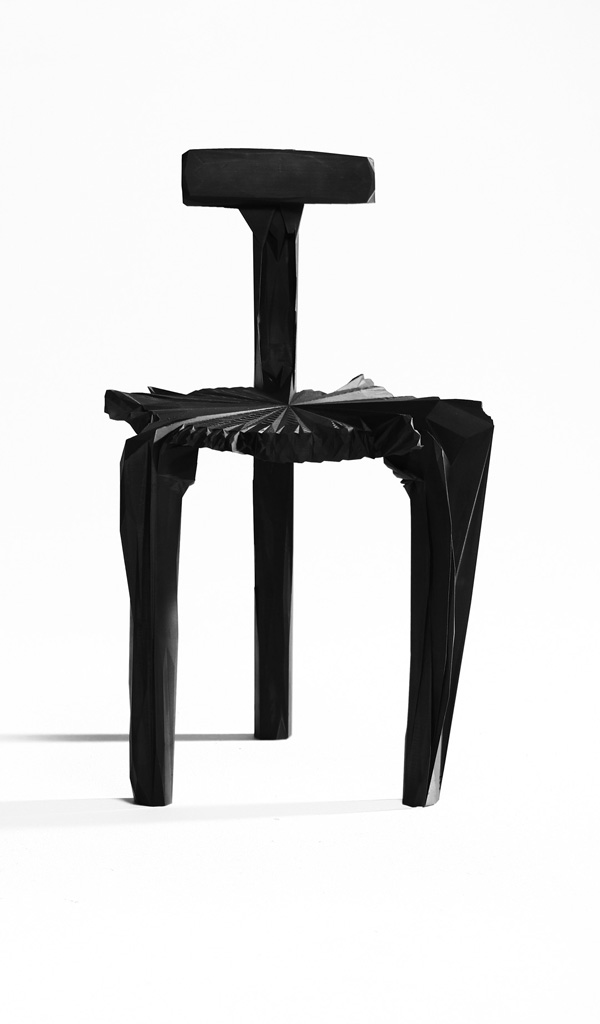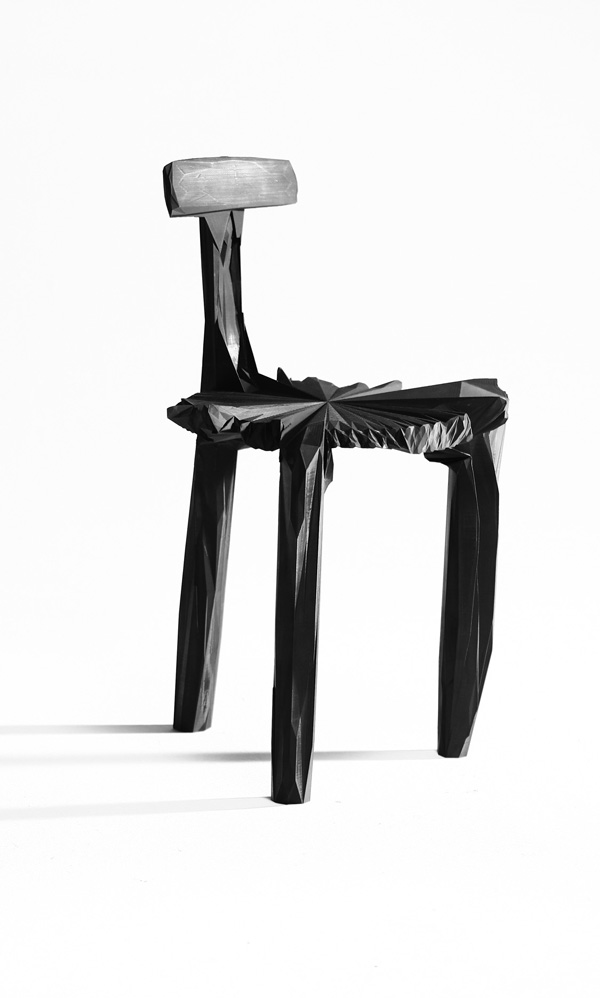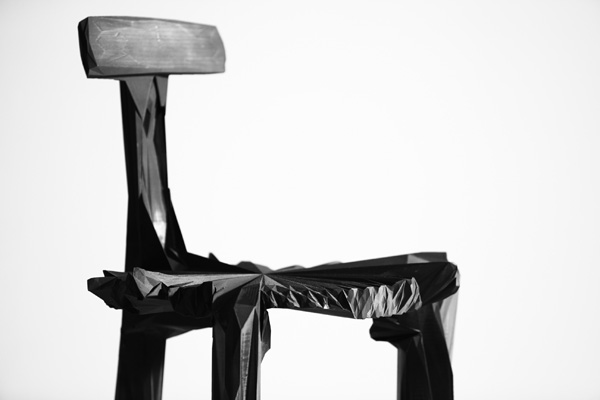The Nóize Chair, by Brazilian designers Estudio Guto Nequena combines an appreciation for the past with a contemporary method for making. Estudio Guto Nequena begins with a digitized model of great Brazilian Modernist architect Lina Bo Bardi’s ‘Girafa Chair’ from 1987 as a starting point for design. The chair, renowned for its formal simplicity and clear structural expression, is manipulated and deformed through a set of digital processes. The digitized model’s geometries are combined with the sound signatures of mapped sounds. These sounds, taken from recordings of urban ‘Nóize’ are translated into equations that when applied to the geometries of the existing digitized chair, alter the chair’s composition, distorting the seat, legs, and back of the chair in accordance with the decibel level, frequency, and pitch of the recorded sounds.
The resulting geometries make up the chair’s new physicality. This digital model is then emailed to a fabrication shop in Belgium, where the chair is 3-D printed. The physical chair is then shipped back to Brazil, where it is bought and sold like any other chair. This project exemplifies the possibilities inherent in combining analogue objects with digital processes in order to achieve new methods of expression, innovation, and construction.For More images and details on the Noize Chair, watch this video for more information of the work of Estudio Guto Nequena, see here.

